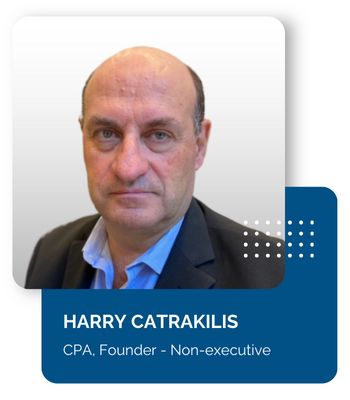Sprinters vs. Long-Distance Runners: What Makes a Successful Employee
- September 18, 2024
- Posted by: Harry Catrakilis
- Category: Blog

Building a Team of Successful Employees: The Role of Endurance Over Flash
Harry Catrakilis reflects on two different types of employees: sprinters and long-distance runners. He dives into what makes a successful employee and how managers can build teams that last.
“This is my seventh article, and I sometimes worry that I sound like a grumpy old man, constantly critiquing the modern world. I’ve been reflecting on the purpose of this series and, while it may seem critical, I believe it’s important to highlight things that deserve attention. That said, I’ll aim to find more positive angles moving forward—just not today.
When I was younger, my father used to say, “Be a long-distance runner in everything you do.” Back then, I thought sprinters were much cooler. But over time, especially after years of managing teams, I’ve come to understand the value of being a long-distance runner.
In the workplace, “sprinters” are often the people who impress right from the start. In interviews, they shine, full of enthusiasm, energy, and passion. They’re the employees who immediately grab attention with their dynamic personalities and seem ready to conquer anything. However, as a hiring manager, it’s essential not to get too swept up by that initial spark. While some sprinters maintain their drive, many eventually lose momentum. After a while, you may hear them say, “This is too hard,” “I’m burnt out,” or “I’m bored.”
The most disheartening scenario is when a former high performer believes they’ve already earned their place and coast on past achievements, saying things like, “I worked really hard five years ago, so I deserve to slow down now.” When you ask them to deliver the same performance, they may resist, thinking they’re still rockstars when, in reality, they’ve lost their edge.
On the other hand, “long-distance runners” may not immediately stand out, but they possess the endurance, tenacity, and consistency to stay the course. They are the employees who, even if they don’t dazzle right away, will prove their value over time. Long-distance runners keep pushing forward, maintaining a steady level of performance, often improving and growing as they go.
Of course, long-distance runners still need talent and drive—having stamina alone doesn’t make someone a high performer. But as a manager, with experience, you become better at distinguishing between the true long-distance runners and those who lack upward career trajectory. When you find those steady, consistent performers who combine talent with tenacity, you’ve struck gold.
Managing a long-distance runner is one of the most rewarding experiences as a leader. They not only push themselves but also inspire you to keep raising the bar, creating opportunities, and adding value to the team. If you don’t, there’s always the risk that they may outgrow your leadership and move on, questioning whether they joined the right organization in the first place.
That said, identifying who’s a sprinter, a pretender, or a long-distance runner isn’t always straightforward. A cousin of mine, who’s a psychologist, once pointed out the need to be mindful of cultural differences when evaluating people. In some Western societies, students are taught how to sell themselves, which can make it hard to tell if someone’s genuinely talented or just skilled at self-promotion. In other cultures, where self-promotion isn’t as emphasized, you might overlook a truly talented, loyal employee simply because they haven’t been trained to present themselves as well.
As a leader, learning to spot these differences is critical. If you can intuitively distinguish between sprinters, pretenders, and long-distance runners, you’ll build a team that not only performs but thrives. A healthy mix of energy, talent, and long-term commitment creates a work environment that’s productive and genuinely enjoyable for everyone involved.
In the end, a successful team isn’t just about initial enthusiasm—it’s about endurance, consistent performance, and the ability to keep moving forward, no matter the challenges.” -Harry Catrakilis
The above article only intends to provide general information and reflection. It is not designed to provide specific advice or recommendations for any individual. It does not give personalized tax, financial, or other business and professional advice. Before taking any form of action, you should consult a financial professional who understands your particular situation. CKH Group will not be held liable for any harm/errors/claims arising from the blog. Whilst every effort has been taken to ensure the accuracy of the contents, we will not be held accountable for any changes that are beyond our control.
About the Author
Harry Catrakilis has over 30 years of experience in the practice of public accounting, corporate financial management, and investment banking. He was managing partner of CKH from 2003 until summer of 2018 when main operations were passed on to CEO Nico Meyer. This blog was written by and is the candid reflections of Harry Catrakilis.

